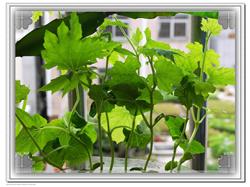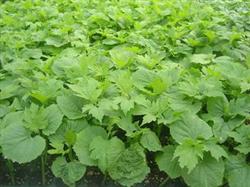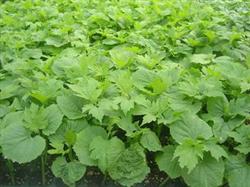How to manage balsam pear at seedling stage

How to manage balsam pear seedlings? Please point out that balsam pear seedlings should pay attention to the following points: 1. Ploughing, weeding and soil cultivation: generally, after planting and watering slow seedling water, the first intermediate ploughing should be carried out when the topsoil is slightly dry and not sticky. If there is a windy day or soil drought, it can be rewatered and then ploughed. The second intertillage can be carried out 10-15 days after the first intertillage. This time, attention should be paid to protecting the new roots, which should be shallow rather than deep. Each ploughing can be combined with the application of some high-quality farm fertilizer, such as cake fertilizer, all kinds of poultry feathers and rotten chicken manure, pig manure and so on. After setting up the frame, when the melon vine extends to more than 50 centimeters, the root system is basically covered with the whole row, so it is generally no longer suitable for ploughing. But we should pay attention to pulling out weeds in time. In the first ploughing, if a lack of seedlings or weak diseased seedlings are found, they should be replanted in time to preserve the seedlings. 2. Scaffolding and pruning: when the seedlings grow to about 20 cm, it is necessary to draw vines. There are two ways to build scaffolding: flat scaffolding and herringbone scaffolding. The flat shed has the advantages of good ventilation, many melons and high yield. Flat scaffolding is divided into multi-span flat scaffolding and sub-span flat scaffolding. The multi-span flat scaffolding is generally in the melon row, erecting a wooden pile every 3 to 4 meters, above which the stakes of the whole field are connected with small bamboo, small wooden sticks or nylon nets, and the roof is about 2 meters from the ground; the split flat scaffolding is generally a shed for every two rows of melons, with a height of 1.5 meters. The scaffolding should be firm in order to avoid the collapse of the wind, while damaging the melon seedlings and affecting the yield. Click to get more balsam pear planting techniques click to get more vegetable planting techniques
- Prev

How does balsam pear grow seedlings?
How does balsam pear grow seedlings? The seed epidermis of balsam pear is thick and hard. If the seeds are sown directly into the field, the water is not easy to penetrate into the field, the germination is slow, the unearthed seedlings are uneven, and the rate of missing seedlings is relatively high. Therefore, seed soaking should be carried out before sowing. The main results are as follows: (1) the method of accelerating germination first put the seeds into 55.
- Next

What problems should be paid attention to in spring bitter gourd cultivation
1. Select fine varieties and breed seedlings at appropriate time. Spring balsam pear should choose high-yield, efficient, high-quality hybrid varieties. For example: Yuefeng No.1, Green No.2 and Emerald cultivated by Provincial Academy of Agricultural Sciences shall be sown and raised when the daily average temperature is stable above 10℃. Try to sow early in time to prolong the vegetative growth period. With a nutrition cup (bag...
Related
- Where is it suitable to grow horseradish in China? it is expected to see the middle altitude horseradish in Alishan.
- How to prevent tomato virus disease reasonably? (Control methods included)
- Many people like to plant towel gourd on the balcony. What are the main points of this method and management?
- What crops can chili peppers be mixed with?
- Fertilization techniques and matters needing attention in Tomato
- What are the grafting techniques for peach seedlings in spring?
- Harm and control methods of root swelling disease of Chinese cabbage
- What are the pests of sweet potatoes? How to prevent and cure it?
- Symptoms, causes and Control methods of navel Rot in Tomato
- The cause of "Cucumber rotten bibcock" in Farmers' planting Cucumber and its Control Plan

